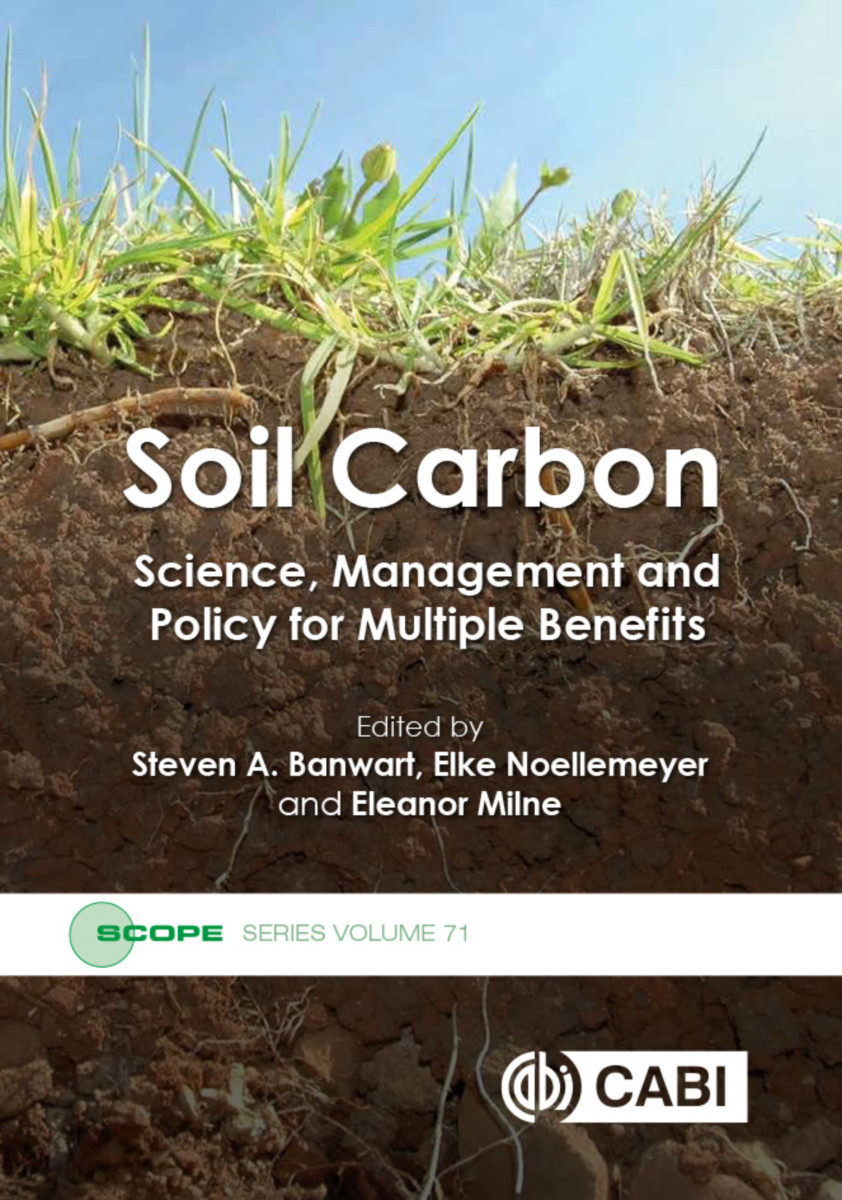Soil Carbon
Science, Management and Policy for Multiple Benefits
- Publisher
CABI - Published
8th November 2019 - ISBN 9781786395504
- Language English
- Pages 420 pp.
- Size 6.75" x 9.5"
- Images figures, graphs & maps
- Publisher
CABI - Published
5th February 2015 - ISBN 9781780645322
- Language English
- Pages 420 pp.
- Size 6.75" x 9.5"
- Images figures, graphs & maps
This book brings together the essential evidence and policy opportunities regarding the global importance of soil carbon for sustaining Earth's life support system for humanity. Covering the science and policy background for this important natural resource, it describes land management options that improve soil carbon status and therefore increase the benefits that humans derive from the environment. Written by renowned global experts, it is the principal output from a SCOPE rapid assessment process project.
Foreword
Acknowledgements
Executive Summary
Part I: Introduction, Overview and Integration
1. The Global Challenge for Soil Carbon
2. Soil Carbon: a Critical Natural Resource – Wide-scale Goals, Urgent Actions
3. Soil Carbon Transition Curves: Reversal of Land Degradation through Management of Soil Organic Matter for Multiple Benefits
4. From Potential to Implementation: An Innovation Framework to Realize the Benefits of Soil Carbon
5. A Strategy for Taking Soil Carbon into the Policy Arena
Part II: Soil Carbon in Earth’s Life Support System
6. Soil Formation
7. Soil Carbon Dynamics and Nutrient Cycling
8. Soil Hydrology and Reactive Transport of Carbon and Nitrogen in a Multi-scale Landscape
Part III: The Multiple Benefits of Soil Carbon
9. Climate Change Mitigation
10. Soil Carbon and Agricultural Productivity: Perspectives from Sub-Saharan Africa
11. Soil as a Support of Biodiversity and Functions
12. Water Supply and Quality
13. Wind Erosion of Agricultural Soils and the Carbon Cycle
14. Historical and Sociocultural Aspects of Soil Organic Matter and Soil Organic Carbon Benefits
15. The Economic Value of Soil Carbon
Part IV: Quantification and Reporting of Soil Carbon
16. Measuring and Monitoring Soil Carbon
17. Modelling Soil Carbon
18. Valuation Approaches for Soil Carbon
Part V: Influence of Human Activity on Soil Carbon
19. Current Soil Carbon Loss and Land Degradation Globally: Where are the Hotspots and Why There?
20. Climate Change and Soil Carbon Impacts
21. Impacts of Land-use Change on Carbon Stocks and Dynamics in Central-southern South American Biomes: Cerrado, Atlantic Forest and Southern Grasslands
Part VI: Managing Soil Carbon for Multiple Benefits
22. Basic Principles of Soil Carbon Management for Multiple Ecosystem Benefits
23. Managing Soil Carbon for Multiple Ecosystem Benefits – Positive Exemplars: Latin America (Brazil and Argentina)
24. Managing Soil Carbon for Multiple Benefits – Positive Exemplars: North America
25. Managing Soil Carbon in Europe: Paludicultures as a New Perspective for Peatlands
26. Managing Soil Organic Carbon for Multiple Benefits: The Case of Africa
27. Benefits of SOM in Agroecosystems: The Case of China
28. Assessment of Organic Carbon Status in Indian Soils
Part VII: Governance of Soil Carbon
29. Policy Frameworks
30. National Implementation Case Study: China
31. Avoided Land Degradation and Enhanced Soil Carbon Storage: Is There a Role for Carbon Markets?
Steven A. Banwart
Steven A. Banwart teaches at University of Leeds, UK.
Elke Noellemeyer
Elke Noellemeyer is with The National University of La Pampa, Argentina.
Eleanor Milne
Eleanor Milne is affiliated with both the University of Leicester and Colorado State University.


